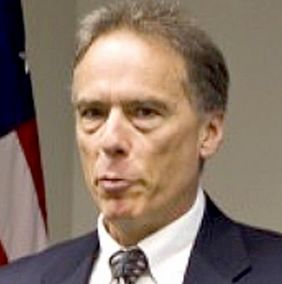The National Oilheat Research Alliance (NORA) held its second Oilheat Technical Workshop on September 18th -19th in Newport, RI. The workshop was held in partnership with the Southern New England Energy Conference. John Huber, NORA President, kicked-off the program describing the workshop’s goals as providing information on the progress of NORA R&D programs and to explore new ideas in an open forum.

Marin
The opening address was given by Arthur Marin, Director of Northeast States for Coordinated Air Use Management (NESCAUM). NESCAUM is an association of air quality state agencies in the Northeast including, Connecticut, Maine, Massachusetts, New Hampshire, Rhode Island, Vermont, New Jersey, and New York. Among NESCAUM’s missions is to assist member states in implementing national environmental programs required under the Clean Air Act and other federal legislation. Marin presented a vision for the transition of the Northeast to carbon-neutral by 2050. This vision includes a dramatic increase in renewable electric power production and a conversion to heat-pump residential systems. The presentation underscored the need for the oilheat industry to plan for renewable fuels and integrated renewable/liquid fuel systems.
John Battaglioli, Babington Technologies, Rocky Mount, NC, reported on the progress in the development and commercialization of the Babington Air-Atomized burner. Babington’s approach is a technically-strong product with capability for modulation, low firing rates and self-tuning of air/fuel ratio. This burner is based on the novel Babington atomizer that has achieved success as an oil burner for military cooking applications.
Jason Targoff, Novatio Engineering, Waltham, MA, gave a presentation on their vaporizing oil burner which can, potentially, enable oil to be used in gas-type appliances.
One of the Workshop sessions was dedicated to biofuels. Rich Sweetser, representing NORA, opened with a review of a recent update to the analysis of the impact of biofuels on greenhouse gas emissions. He showed that at a biodiesel blend level of about 15% (B15) heating oil and natural gas are equivalent. At higher biodiesel blend levels heating oil scores better than gas.
Dr. Thomas Butcher, NORA Director of Research, presented the results of a field study on fuel quality, which involved sampling from home tanks with high (20% biodiesel and perhaps more) and low (5% biodiesel and below) blend levels. The study also included considerable follow-up lab analysis and studies. While the results showed fuel quality to be generally good, it also uncovered an interesting and strong impact of copper exposure on results of the Rancimat stability test. Efforts to correlate this with actual fuel quality did not show a strong effect. Dr. Butcher reported that studies in this area are continuing.
Steve Howell, representing the National Biodiesel Board, presented results from a research study on long-term biodiesel stability. This explored the potential to re-additize fuels periodically in long-term storage and that storage periods up to several years were possible.
Dr. Butcher also presented results of a NORA study on the impact of biodiesel blend levels on cad cell resistance signal. With higher biodiesel blend levels, cad cell resistance decreases. In one test, for example, changing the fuel from B0 to B30 blend, without adjusting the air shutter, changed the steady state resistance from 458 to 605 ohms. Further increasing the biodiesel blend level to B50 increases the cad cell resistance to 951 ohms. The figure below shows the general trend observed. At higher biodiesel blend levels the burner can be re-tuned, leading to lower cad cell steady state resistance. Example: change in cad cell resistance with increasing biodiesel content – no change in air shutter setting
Mike Casatta, Biofine LLC, Framingham, MA gave a talk on a new wood-waste derived biofuel, Ethyl Levulinate (EL). Dr. Butcher joined Mr. Casatta to outline the plans for a field trial of this fuel at the 10% blend level in Maine during the winter of 2017-2018.
Ted Olszewski, R.W. Beckett Corp., North Ridgeville, OH, outlined and described a series of tests underway at Beckett to evaluate biodiesel and component compatibility. Most of the work was preliminary and Beckett indicated further analytics were required.
Roger Marran, Energy Kinetics Inc., Lebanon, NJ, presented two recent company innovations that were supported through the NORA R&D program. The first is a “combi” oil-fired boiler that produces both heat and hot water. Unlike traditional tankless coil boilers, the new Ascent uses an external plate heat exchanger and novel controls. Advantages include, increased hot water delivery capacity and improved efficiency. Maran also reviewed their technology for dilution venting, which enable high efficiency, non-condensing boilers to use low cost plastic vent materials.
Following Marran, Dr. Butcher reviewed a NORA project to develop a “Best Practices” guide for achieving high-efficiency with tankless coil boilers. This project is co-funded by the New York State Energy Research & Development Authority (NYSERDA). The work includes in-lab testing of the actual performance of different types of tankless coil boilers under simulated use conditions. For conventional tankless coil boilers, the hot water heating efficiency is low – on the order of 40%. Testing of the new combi boiler from Energy Kinetics is underway.
Mike Gilibrand, Stone Mountain Technologies, Inc. (SMTI), Johnson City, TN, made a presentation on their work to develop an oil-fired absorption heat pump. This is an extension of their work on gas-fired heat pumps and will use the Babington oil burner in a modulating mode. The fuel-to-heat efficiency of this system under nominal outdoor conditions is projected to be 145%, offering the potential for a dramatic heating efficiency improvement.
Bob O’Brien of Technical Heating, Mt. Sinai, NY and Rich Simons of Laars Heating Systems, Rochester, NH, both spoke on advancing controls and connectivity of heating systems in the current era of increasing use of wi-fi as well as other tools to enhance home system efficiency, comfort and reliability. O’Brien talked about the challenges associated with the current generation of improved controls, which includes local displays of some operating information. He made a case that there is a need to provide to the technician more interpretation of the data, including diagnostic guidance along with steps to take and not just the raw data, which can be overwhelming. Simons reviewed the many web-based communication tools currently available and the options for getting the information to service organizations.
The full agenda for the Workshop and many of the presentations can be here.

